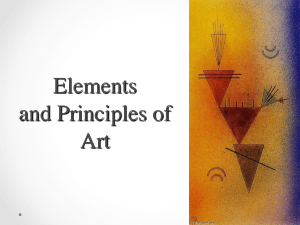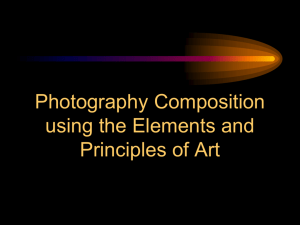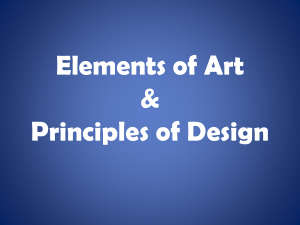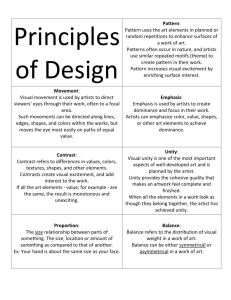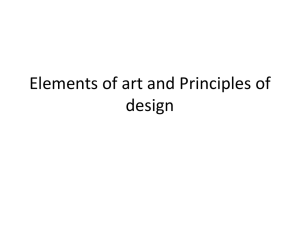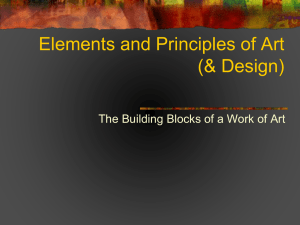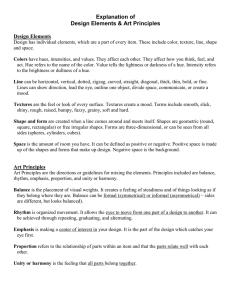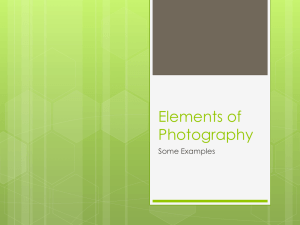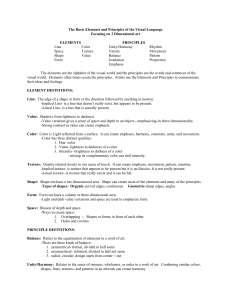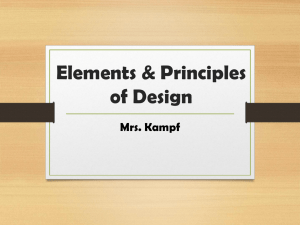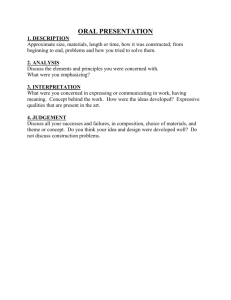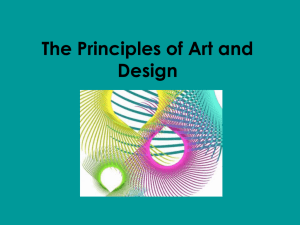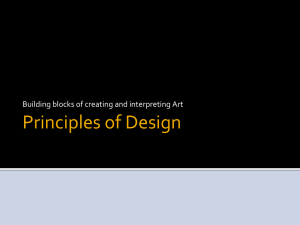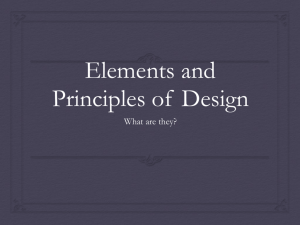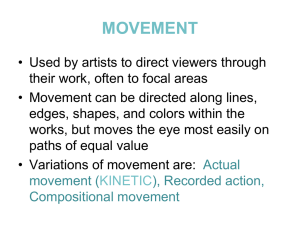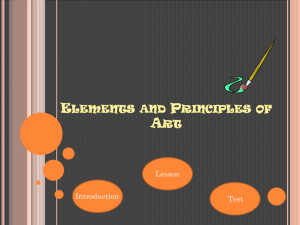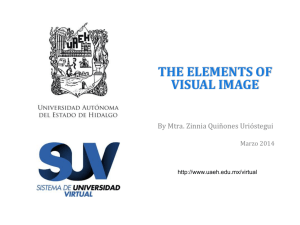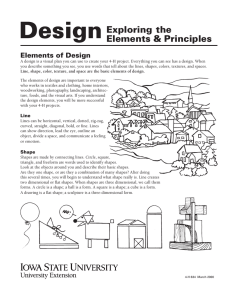Principles of design and elements of art handout
advertisement
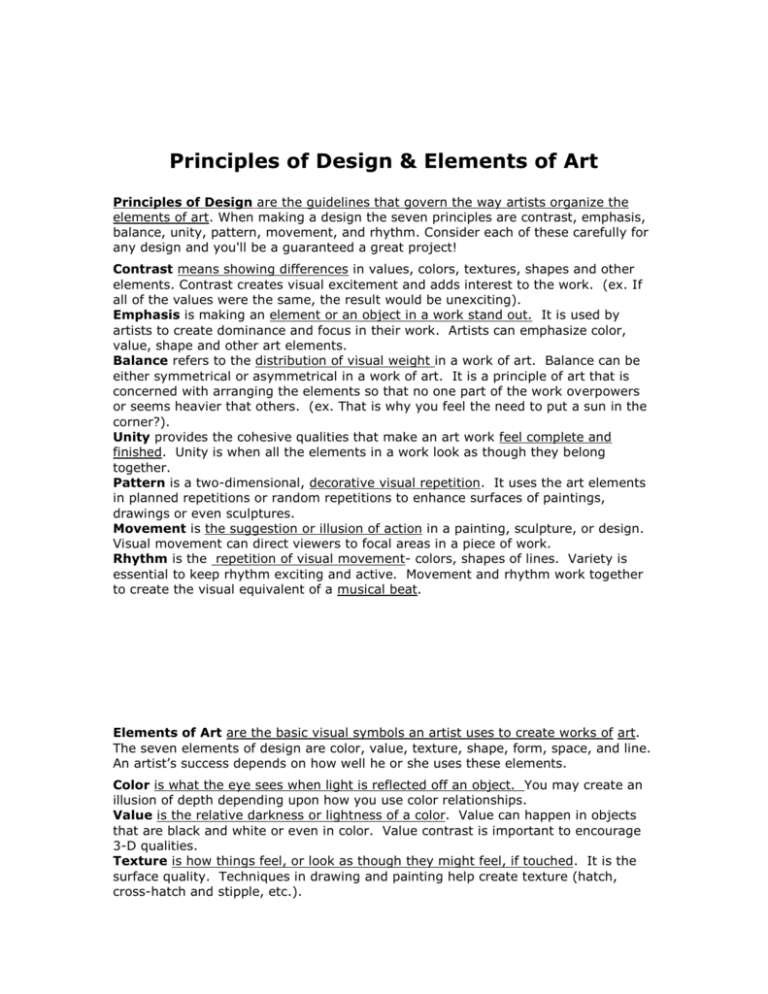
Principles of Design & Elements of Art Principles of Design are the guidelines that govern the way artists organize the elements of art. When making a design the seven principles are contrast, emphasis, balance, unity, pattern, movement, and rhythm. Consider each of these carefully for any design and you'll be a guaranteed a great project! Contrast means showing differences in values, colors, textures, shapes and other elements. Contrast creates visual excitement and adds interest to the work. (ex. If all of the values were the same, the result would be unexciting). Emphasis is making an element or an object in a work stand out. It is used by artists to create dominance and focus in their work. Artists can emphasize color, value, shape and other art elements. Balance refers to the distribution of visual weight in a work of art. Balance can be either symmetrical or asymmetrical in a work of art. It is a principle of art that is concerned with arranging the elements so that no one part of the work overpowers or seems heavier that others. (ex. That is why you feel the need to put a sun in the corner?). Unity provides the cohesive qualities that make an art work feel complete and finished. Unity is when all the elements in a work look as though they belong together. Pattern is a two-dimensional, decorative visual repetition. It uses the art elements in planned repetitions or random repetitions to enhance surfaces of paintings, drawings or even sculptures. Movement is the suggestion or illusion of action in a painting, sculpture, or design. Visual movement can direct viewers to focal areas in a piece of work. Rhythm is the repetition of visual movement- colors, shapes of lines. Variety is essential to keep rhythm exciting and active. Movement and rhythm work together to create the visual equivalent of a musical beat. Elements of Art are the basic visual symbols an artist uses to create works of art. The seven elements of design are color, value, texture, shape, form, space, and line. An artist’s success depends on how well he or she uses these elements. Color is what the eye sees when light is reflected off an object. You may create an illusion of depth depending upon how you use color relationships. Value is the relative darkness or lightness of a color. Value can happen in objects that are black and white or even in color. Value contrast is important to encourage 3-D qualities. Texture is how things feel, or look as though they might feel, if touched. It is the surface quality. Techniques in drawing and painting help create texture (hatch, cross-hatch and stipple, etc.). Shape is something distinguished from its surroundings by its outline within your design. Shapes have two dimensions, length and width. Shapes can be geometric or organic. Form refers to an object with three dimensions. Form describes volume and mass, or the 3-D aspects of objects that take up space. Space is the distance or area between, around, above, below, and within things. Space is empty until shapes or forms fill it up. (Sometimes a human’s eye needs space to distinguish the part that’s meant to be noticed compared to the background). Line is a mark made by a pointed tool. It is the path of a dot through space. It has length and width. Line can suggest movement in a piece of work. The major difference between principles and elements is that principles are rules you have to follow and elements are things that will help you complete those rules for the best project outcome.

